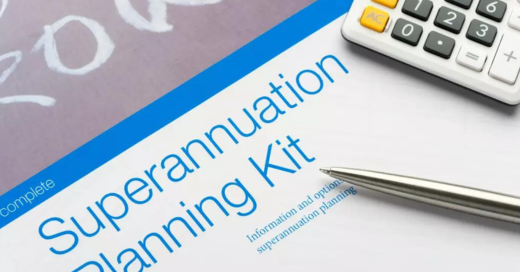How to set up a self managed super fund?
Table of Contents
ToggleSetting up a self managed super fund (SMSF) is becoming more and more popular amongst both experienced investors and first-time savers alike. After all, who wouldn’t want the freedom to manage their own investments with substantial tax savings? Whether you’re looking for investment control or simply just higher returns, an SMSF has you covered.
Unfortunately, however, setting up a SMSF isn’t as easy as it might sound – there’s several steps that need to be taken before your asset falling under an Australian Financial Services Licence can be accessed. To help break down the process of setting up a SMSF in Australia, this blog post will summarise the key steps involved including necessary documents, starting payments, and overall costs.
Benefits of setting up a self-managed super fund (SMSF)
Delving into the realm of self-managed super funds (SMSFs) can unlock a world of opportunities and offer several advantages for investors seeking greater autonomy and flexibility in their retirement planning.
- By setting up an SMSF, you gain direct control over your investment decisions, allowing you to tailor your portfolio to align with your specific financial goals and risk appetite.
- SMSFs can provide a tax-efficient vehicle for wealth creation, as they can make the most of the concessional tax environment afforded to superannuation funds.
- SMSFs allow for strategic estate planning, as you can manage intergenerational transfer of assets seamlessly, cementing a secure financial future for your family.
By exploring the benefits of an SMSF, you are taking a step towards harnessing your financial destiny and empowering yourself with the tools to enjoy a comfortable and rewarding retirement.
How to set up a self managed super fund?
Diving into the world of self-managed super funds (SMSFs) can be an exciting and ultimately rewarding experience. Many Australians are empowering their financial futures by taking charge of their retirement savings through this method. Setting up an SMSF in Australia might seem daunting, but with the right guidance and professional advice, it becomes a smooth and manageable process.
- Establishing a trust and trust deed, clearly defining the rules and the fund’s objectives.
- Register your SMSF with the Australian Taxation Office (ATO) and receive your Australian Business Number (ABN) and Tax File Number (TFN).
- Create a bank account solely for the fund to manage and track its collection of contributions, payment of benefits, and investment earnings.
- Develop an appropriate investment strategy that aligns with your fund members’ risk tolerance and retirement goals.
Engaging with SMSFs opens a world of opportunities and autonomy over your financial future, making it well worth the investment of time and effort.
Can you set up a self managed super fund yourself?
Setting up a self managed super fund (SMSF) can seem like an intimidating process, but the reality is that with a good understanding of the laws and regulations and the right organisational skills, it is something that individuals can easily manage alone. Using an accountant or financial planner to help you understand the implications of setting up SMSFs may ease any apprehension, as may utilising a service provider to manage the more intricate components of the setup process.
Ultimately, however, there is no reason why setting up a SMSF couldn’t be done by yourself – it could simply take some effort and research to ensure everything is done correctly.
How much money do you need to set up a self managed super fund?
Setting up a self-managed super fund (SMSF) can provide greater control and flexibility over your retirement savings. However, determining the exact amount of money required to establish a SMSF can vary depending on your individual circumstances and investment goals. It is generally recommended that you have a minimum balance of $200,000 to justify the costs associated with running a SMSF. These costs include professional fees for financial advice, accounting, tax compliance and auditing, along with ongoing investment and administration expenses.
Before taking the plunge, ensure that you carefully consider the advantages and disadvantages of managing your own super fund, weigh your financial objectives, and seek professional advice to determine if an SMSF is the right choice for your specific situation.
Gather the Essential Documents Required to Establish a SMSF
Embarking on the journey to establish a Self-Managed Super Fund (SMSF) can bring about a sense of empowerment and financial independence. While the rewards are undeniably attractive, it is crucial not to overlook the importance of gathering the essential documents required for a smooth and efficient setup process.
- As a first step, you must prepare a thoroughly crafted trust deed that lays the foundation of your SMSF and explicitly states the purpose, structure, and operational guidelines tailored to your specific circumstances.
- Furthermore, acquiring the Australian Business Number (ABN) and Tax File Number (TFN) for your SMSF is essential to ensure seamless registration and compliance with the Australian Taxation Office (ATO).
- It is also paramount to develop a comprehensive investment strategy that outlines your fund’s objectives and risk appetite, while factoring in the members’ financial goals, investment preferences, and retirement planning.
Ultimately, a meticulous approach to collecting these critical documents significantly contributes to the successful functioning and governance of your SMSF.

Know the Rules and Regulations Regarding SMSFs
With over half a million Self-Managed Super Funds (SMSF) in Australia, SMSFs are currently the most popular choice for many Australians to manage their own retirement investments. Operating an SMSF gives individuals and couples the flexibility of choosing their own level of involvement and making decisions around asset selection and strategy.
Before setting up or investing in an SMSF it is important to understand the rules, regulations and tax requirements. It is also wise to seek professional advice as strict legal responsibilities apply to running an SMSF that trustees must adhere to in order to remain compliant with the ATO.
When running your own Self Managed Super Fund, you must adhere to strict regulations. Here are some of the major ones that should not be ignored:
Key Legislation
The Superannuation Industry (Supervision) Act 1993, a.k.a the SIS Act, is the governing legislation for SMSFs.
The Superannuation Industry (Supervision) Regulations 1994 are the official subsidiary legislation.
The Australian Taxation Office oversees the regulation of SMSFs.
Sole purpose test
The sole purpose test necessitates SMSF trustees to preserve the fund primarily for providing retirement benefits to members, or if a member passes away before reaching retirement age, their dependants.
The SMSF sole purpose test is a stringent check – trustees must adhere to the single purpose of these funds. Those who use their Self Managed Super Funds for any other objectives are violating this directive.
According to the Australian Taxation Office, one of their primary methods for determining whether a Self-Managed Superannuation Fund (SMSF) has gone against the sole purpose test is by scrutinizing both the character and objective of its investments.
The sole purpose rule is bolstered by other conditions outlined in the SIS Act.
Prohibited from lending money
An SMSF trustee is strictly forbidden from lending money or offering any other type of financial aid with the resources of a self-managed super fund to either a member in their SMSF, or an affiliated relative.
Prohibited from acquiring assets from related party
Trustees of SMSFs are barred from acquiring assets, such as securities listed on an authorised exchange and business real estate, from themselves or their relatives – excluding related entities.
Avoid in-house assets
When an SMSF trustee loans, invests in, or leases their assets to a related party or entity of the fund, it is classified as an “in-house asset.” Unfortunately for these trustees however, they are not allowed to acquire any such asset that has a market value higher than 5% of the total market value of all SMSF assets.
An SMSF asset that is used and appreciated by a member of the fund, whether on an informal basis with no payments or otherwise, ultimately becomes an in-house asset of the respective superannuation fund.
Complex and far-reaching in-house asset regulations can lead to inadvertent violations. Therefore, it is best to refrain from acquiring or maintaining any of these assets at all.
Prohibit from borrowing (specific exception applies)
Unless there are specific exemptions, a Self-Managed Super Fund (SMSF) trustee is not allowed to borrow money or keep any existing loan.
One exclusivity is the restricted recourse borrowing arrangement which need to be organized as indicated by the SIS Act.
Do not pay member benefits early
SMSF trustees must only pay preserved benefits to members who have met the condition of release (that is, they’ve reached their preservation age and retired), or when authorised by a Release Authority. It’s illegal for anyone else to receive these payments, with severe consequences – including fines and other penalties such as disqualification – awaiting both trustee and recipient/member should it occur. Furthermore, any funds involved will be labelled non-complying in nature.
All trustees of an SMSF are responsible for understanding the laws governing superannuation and need to have a solid understanding of what needs to be done appropriately, including complying with audit and record keeping requirements.
Investing time in researching the relevant Australian rules, regulations and processes can help protect your financial future.

Research Different Investment Options for Your SMSF
Diving into the diverse world of investment options for your Self-Managed Super Fund (SMSF) can be both exhilarating and daunting. As you embark on this financial journey, it’s crucial to stay well-informed and make educated decisions, considering an array of investment opportunities available in the market to ensure a prosperous, secure future.
Begin by seeking expert advice or attending educational seminars that can help unravel the complexities of SMSFs, opening doors to various investment avenues such as shares, property, term deposits, bonds, and ETFs, among others. Bear in mind the integral role of diversifying your investment portfolio which are to reduce risk, boost long-term returns, and stay ahead of ever-changing market trends.
Ultimately, meticulously researching and planning your SMSF investment strategy can open the gateway for your funds to thrive, solidifying a resilient groundwork that endures the test of time.
Create an Investment Strategy and Set Up Bank Accounts
Embarking on the journey towards achieving financial stability and growth may seem daunting, but taking the first step towards creating a personalised and effective investment strategy can set you on the path to success.
Understanding your financial goals, risk tolerance, and investment horizon is essential in developing an approach tailored to your unique needs. This involves diversifying your investment portfolio with a blend of stocks, bonds, and other investment instruments that suit your objectives and risk profile. It’s equally important to establish the proper bank accounts to provide you with a solid foundation for financial planning and growth. Start by researching and selecting a reputable institution that offers competitive interest rates, low fees, and enhanced security features to ensure both your funds and financial transactions are well protected.
With a robust investment strategy and the right selection of bank accounts, you’ll be well prepared to confidently navigate the world of finance and secure your financial future.
Can I have a smsf and an industry fund?
Navigating the landscape of retirement planning may seem like a daunting task, but rest assured it is possible to explore various options and find the perfect fit for you.
One common question people ask is whether they can have both a self-managed super fund (SMSF) and an industry fund. The answer is yes! By diversifying your investments, you can take full advantage of the unique benefits that each fund type offers.
An SMSF allows for a high degree of personal control over your assets, empowering you to make targeted investment decisions that align with your goals, values, and risk tolerance. On the other hand, industry funds offer lower fees and professional management, so you can benefit from the expertise of skilled fund managers.
Combining the power of both an SMSF and an industry fund not only maximises your investment potential, but also gives you the flexibility to adapt your retirement strategy as your needs and circumstances evolve. Who says you can’t have the best of both worlds?
Is a self managed super fund worth it?
A self-managed super fund (SMSF) has been capturing the attention of many investors and retirement savers, enticing them with the prospect of greater control, flexibility, and potentially higher returns. But is it truly worth the effort?
For individuals with a solid financial knowledge and a keen interest in actively managing their investments, an SMSF might be an appropriate option. It places the power in their hands to implement a personalised investment strategy that aligns with their financial goals and risk tolerance. Additionally, it offers tax efficiencies and the ability to pool multiple members’ funds to achieve economies of scale. However, taking on the responsibility of an SMSF also requires a substantial amount of time, dedication, and compliance with complex regulatory requirements.
Ultimately, the decision to opt for an SMSF hinges on one’s skills, resources, and willingness to commit to the management and administration of their own retirement fund.

Setting up a self-managed super fund and managing your own superannuation can be a great way to make sure that you are making the best possible decisions for your retirement. It allows you to have control and greater flexibility with your investments, in comparison to a traditional superfund. Choosing the right investment strategy is key to ensuring that your smsf grows and meets its objectives, but it’s worth bearing in mind that it takes time to get used to managing all the details required with smsf management.
Ultimately, tackling the idea of setting up a self-managed super fund requires extensive research and preparation, as well as being aware of your obligations under SMSF regulations. If you or someone you know needs help understanding SMSF setup, preparing accounts, or any other related matters, please don’t hesitate to contact us for smsf financial advice. Our expert will be more than happy to answer any queries you may have about SMSFs and provide guidance on how best to manage them.









